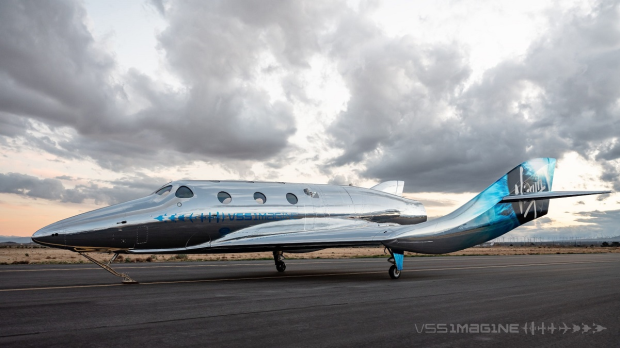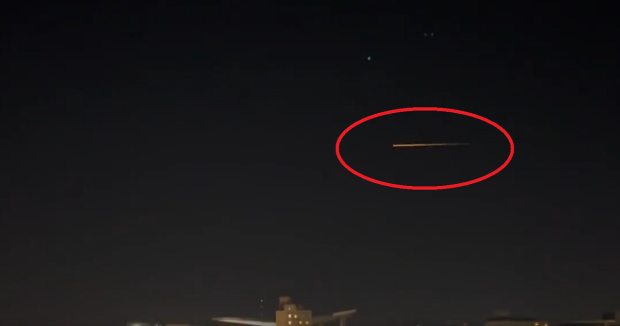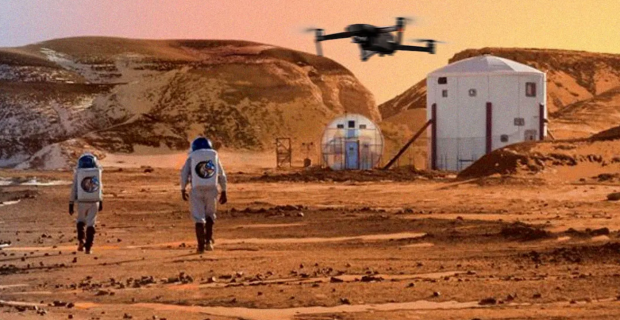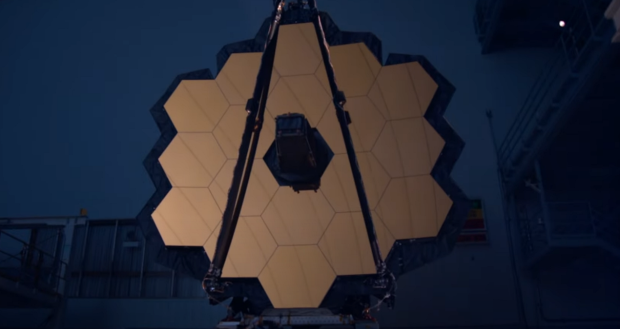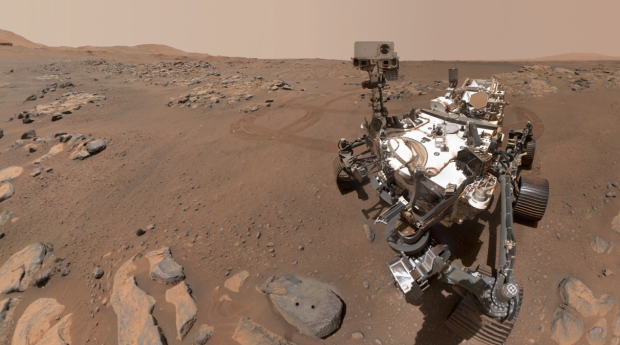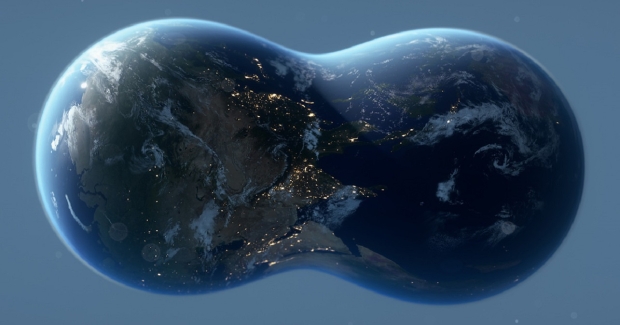Science, Space, Health & Robotics News - Page 247
Here's how often people should be going to space with Virgin Galactic
Richard Branson's space company Virgin Galactic has announced its targets for how many tourists it wants to be taking to suborbital space per month.
In July, Virgin Galactic took Richard Branson and three others to suborbital space via the company's VSS Unity spaceplane. At the moment, the VSS Unity is the only spaceplane the company offers, but Virgin Galactic won't be stopping there as the company has plans for testing the VSS Imagine in early 2023. The VSS Unity will be flown once a month starting in 2023, and during the second half of 2023, the VSS Imagine will begin accepting travelers.
Virgin Galactic CEO Michael Colglazier said that in 2023 Virgin Galactic plans on taking tourists to space three times per month. On Monday, the company announced it has already presold 700 tickets, and of those 700 tickets, one-hundred of them were at the new price point of $450,000. Virgin Galactic has delayed the launch of commercial flights until late 2022 as it announced it had to work on VMS Eve. For more information on this story, check out this link here.
Continue reading: Here's how often people should be going to space with Virgin Galactic (full post)
NASA astronauts filmed returning to Earth like a 'shooting star'
Recently four astronauts that lived on the International Space Station (ISS) for six months returned back to Earth safely with SpaceX's Crew Dragon capsule.
The four astronauts, NASA's Shane Kimbrough and Megan McArthur, French astronaut Thomas Pesquet of the European Space Agency, and Akihiko Hoshide from Japan, took off from the ISS and touched back down on Earth on Monday. SpaceX celebrated the safe arrival by posting to its Twitter with the following message, "Splashdown of Dragon confirmed - welcome back to Earth", and "The Crew-2 astronauts and Dragon spent 199 days in orbit, the first U.S. spacecraft to reach that milestone!"
Dragon spent nine hours navigating Earth's upper atmosphere before reaching the thick atmospheric layers. Upon getting lower into the atmosphere, Dragon was spotted by several people in separate locations across the U.S. Residents in New Orleans were happy to see the SpaceX crew and astronauts travel through the sky in a fiery hot blaze as Dragon re-entered the atmosphere. SpaceX CEO Elon Musk even saw a video of Dragon re-entering and said, "Dragon enters like a shooting star".
Continue reading: NASA astronauts filmed returning to Earth like a 'shooting star' (full post)
Simulated Mars base keeps getting sneaked into by social media users
Some social media users and tourists are taking it upon themselves to inspect the simulated Mars base that is being used for research purposes.
In an op-ed published in Space.com, Dr. Shannon Rupert, the director of the Mars Desert Research Station (MDRS) that she has chased more people off the premises than welcomed them. The MDRS used the Utah desert to create a simulated Mars environment that is used to conduct research that will become valuable information for future astronauts that may live on Mars one day.
The director explains that some people are just tourists and are very polite, while others have resulted in the local police being called and them being removed from the property. Additionally, Dr. Rupert writes that some intruders are using drones to take images of the area to post online, which only attracts more curiosity from the public.
Continue reading: Simulated Mars base keeps getting sneaked into by social media users (full post)
NASA to launch new space telescope 100 times more powerful than Hubble
The largest and most technically challenging space telescope to ever be created stands at three stories tall and as wide as a tennis court.
NASA and the European Space Agency, along with the Canadian Space Agency, are gearing up to launch the James Webb Space Telescope after many long years of development with countless expensive setbacks and delays. NASA has debuted a new video series titled "Elements of Webb," which informs viewers why engineers behind the next-generation space telescope chose to use the materials the JWST is constructed of.
Additionally, the video explains that the JWST is "one hundred times more powerful than the Hubble Space Telescope but at half the weight" and is designed to look back further in time than another other space telescope. The JWST is designed to see the first galaxies that formed after the Big Bang, and hopefully, with its discoveries, researchers will be able to gain a deeper understanding of the formation of the universe and the events that took place right after the Big Bang occurred.
Continue reading: NASA to launch new space telescope 100 times more powerful than Hubble (full post)
NASA releases images of Mars rover seeing something no one's ever seen
NASA's Perseverance rover is back online exploring its surroundings and doing what it does best, take samples of the Martian terrain.
In a new post on NASA's official Twitter for the Perseverance Mars Rover, the rover writes in first-person that it has looked inside "something no one's ever seen". The post continues and explains that a small patch of rock was abraded to remove its surface layer so observations could be made for what was inside. In a separate post, two more images were released that show some layered rocks may have formed by water millions of years ago.
The rover continued and said that these could hold clues about the history of the rocks and, therefore, the geological evolution of the area. Perseverance is tasked with examining viable areas for inspection and finding rocks such as these are essentially gold mines of information for researchers back on Earth that are trying to understand Mars' history. Perseverance is also taking samples that are stored on the rover until they are transported back to Earth.
Continue reading: NASA releases images of Mars rover seeing something no one's ever seen (full post)
Hubble drops gorgeous image of 'cosmic ribbons' caused by a supernova
NASA has published a new image taken by the Hubble Space Telescope, and this time around, we are taking a look at "cosmic ribbons".
The image has been published on the NASA website and showcases DEM L249, that's located in the Large Magellanic Cloud. DEM L249 is the result of the death of a white dwarf star through the massive stellar explosion called a supernova, and the leftover remnants of this explosion are believed to be ribbons of gas.
NASA explains that white dwarf stars are usually stable, but in the event of the white dwarf having a companion star, dubbed a "binary system", the white dwarf's gravitational pull can rip enough matter from its neighboring star that it reaches critical mass and explodes. Astronomers investigated DEM L249 and found that the gas was much hotter than the remnants of a typical Type 1a supernova, which leads the researchers to suspect that the white dwarf star that exploded was much larger the previously anticipated.
Continue reading: Hubble drops gorgeous image of 'cosmic ribbons' caused by a supernova (full post)
Sun outburst releases solar flare, officials warn of 'radio blackout'
The National Oceanic and Atmospheric Administration (NOAA) Space Weather Prediction Center (SWPC) has observed a solar flare occurring on the Sun.
The update has been published to NOAA's SPWC website and states that a long-duration M2 X-ray solar flare occurred at 1702 UTC (12:02 ET) on 9 November 2021. The update goes on to describe that the event took place on the northwest limb of the Sun, facing away from Earth, and that the flare was associated with a coronal mass ejection (CME) burst.
Additionally, the SPWC writes that the CME that was associated with the flare is currently under analysis, but early indicators suggest that it poses no danger to Earth. The M2 flare is categorized as a "minor" flare, with R1 (Radio Blackout) being the lowest level of classification on the five-level scale - R5 being the most extreme. Officials warn that X-rays from the flare may cause a radio blackout over the Americas - a map can be found below.
Continue reading: Sun outburst releases solar flare, officials warn of 'radio blackout' (full post)
Humanity's place in the universe will change when NASA finds this
The position humanity has been in since its existence will be fundamentally changed forever once a space agency identifies the next Earth.
Every ten years National Academies of Sciences, Engineering, and Medicine release a report that has analyzed the most compelling science goals and presents a program that will give an idea of how government space agencies, such as NASA, can invest in technologies, space-based activities that would achieve discoveries in the recommended areas.
The report boils down astronomy's conundrums into three key scientific challenges for the next ten years; finding an Earth-like habitable world, understanding black holes, and galaxy evolution. The report recommends that to find an exoplanet that is habitable and Earth-like, NASA needs to build a new telescope that features all of the necessary instruments to detect and inspect exoplanets for atmospheric readings, in hopes of identifying any fingerprints of life. Axios reports that this telescope would cost around $11 billion and would be launched sometime in 2040.
Continue reading: Humanity's place in the universe will change when NASA finds this (full post)
Heinz announces ketchup made from tomatoes grown in Mars conditions
Heinz is looking to the future of human space travel and has asked the question - "will there be Heinz Tomato Ketchup on Mars?". The answer is yes, or at least it is "yes" for the time being.
Heinz has stepped out of the box and thought years down the line when humans are attempting to grow foods on other planets and to test out if it's possible to grow tomatoes in harsh conditions, Heinz partnered with astrobiologists at the Florida Institute of Technology's Aldrin Space Institute to grow tomatoes in the same conditions as Mars. The team used the same premium tomatoes that are found in normal Heinz products but grew them in very harsh conditions. The end result is a product that "Heinz Tomato Ketchup Marz Edition".
While the product itself won't be available to purchase, it has provided quite a lot of scientific value as the project has successfully demonstrated that tomatoes could one day be harvested on Mars, as well as pioneering into a relatively new field of research for Martian botany. Dr. Andrew Palmer, from the Aldrin Space Institute and the lead of the team behind the research, said, "Before now, most efforts around discovering ways to grow in Martian-simulated conditions are short-term plant growth studies."
Continue reading: Heinz announces ketchup made from tomatoes grown in Mars conditions (full post)
'Cannibal' Sun blast hit Earth, ISS astronauts snap jaw-dropping image
The Sun has seen a lot more activity than what usually occurs recently as our solar star moves further into the most active part of its 11-year solar cycle.
Researchers are estimating that there will be a variation in the number of sunspots that appear on the surface of the Sun and that the activity will reach its peak sometime in 2025. As a result of the increase in solar activity, the Sun has been emitting flares and CMEs more often, some of which have impacted Earth directly, causing minor to moderate geomagnetic storms that create spectacular auroras in the night sky.
European Space Agency's astronaut Thomas Pesquet tweeted out an image of one of these auroras and said that the team was able to experience "the strongest auroras of the entire mission, over North America and Canada." The aurora that Pesquet witnesses was caused by a series of outbursts from the Sun that happened last week. The outbursts occurred in quick succession, with the second was traveling much faster than the first, resulting in the first being cannibalized and a larger cloud being created.
Continue reading: 'Cannibal' Sun blast hit Earth, ISS astronauts snap jaw-dropping image (full post)


